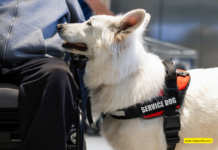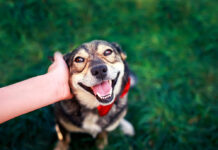Last Updated on May 24, 2024 by Dog Lover
The Ultimate Guide to Pet Care: Tips for a Happy and Healthy Pet
Pet Care Basics
Taking care of your pet is essential for their overall well-being and happiness. By following a few basic guidelines, you can ensure that your furry friend stays healthy and content.
In this section, we will explore the importance of regular veterinary check-ups, proper nutrition, and exercise and mental stimulation for your pet.
Importance of Regular Veterinary Check-ups
Regular veterinary check-ups are crucial to maintaining your pet’s health. These visits allow the veterinarian to monitor your pet’s overall well-being, detect any potential health issues early on, and provide necessary vaccinations and preventive treatments.
It’s recommended to schedule these check-ups at least once a year, but frequency may vary depending on the age and specific needs of your pet.
During a veterinary check-up, the veterinarian will conduct a thorough physical examination, assess your pet’s weight and body condition, and address any concerns or questions you may have.
These visits also provide an opportunity to discuss preventive care measures, such as flea and tick prevention, heartworm prevention, and dental care. By staying proactive with veterinary check-ups, you can ensure that your pet receives the necessary care to live a long and healthy life.
Proper Nutrition for Your Pet
Proper nutrition is vital for your pet’s overall health and well-being. Providing a balanced and nutritious diet is essential to meet their specific dietary requirements and prevent nutrient deficiencies.
Consult with your veterinarian to determine the best diet for your pet based on their age, breed, size, and any specific health conditions they may have.
When selecting pet food, look for products that are formulated to meet the nutritional needs of your pet. High-quality pet food should contain a balance of proteins, carbohydrates, fats, vitamins, and minerals.
Avoid feeding your pet excessive amounts of treats or human food, as these can lead to weight gain and nutritional imbalances.
Remember to provide fresh water at all times and monitor your pet’s food intake to prevent overeating. If you have any questions or concerns about your pet’s nutrition, consult with your veterinarian who can provide personalized advice based on your pet’s specific needs.
Exercise and Mental Stimulation
Regular exercise and mental stimulation are essential for keeping your pet happy and healthy. Physical activity helps maintain a healthy weight, promotes cardiovascular health, and supports strong muscles and joints.
The type and amount of exercise needed may vary depending on your pet’s breed, age, and overall health. Consult with your veterinarian to determine an appropriate exercise routine for your pet.
In addition to physical exercise, mental stimulation is important to prevent boredom and promote mental well-being. Engage your pet in interactive play sessions, provide them with puzzle toys or treat-dispensing toys, and rotate their toys regularly to keep them mentally stimulated.
Both exercise and mental stimulation contribute to reducing stress and anxiety in your pet, which can help prevent behavioral issues. Spend quality time with your pet, engaging in activities they enjoy, and consider training sessions to provide mental challenges and reinforce positive behaviors.
By prioritizing regular veterinary check-ups, proper nutrition, and exercise and mental stimulation, you can provide your pet with a solid foundation for a happy and healthy life.
Remember to consult with your veterinarian for personalized advice and recommendations tailored to your pet’s specific needs.
Grooming and Hygiene
Keeping your pet clean and well-groomed is an essential part of pet care. Regular grooming helps maintain their overall health and hygiene.
In this section, we will discuss two important aspects of grooming and hygiene: bathing and brushing your pet, as well as nail trimming and dental care.
Bathing and Brushing Your Pet
Regular bathing and brushing are crucial for keeping your pet’s coat healthy, free from dirt, and tangle-free. The frequency of bathing and brushing depends on the type of pet you have and their specific needs.
For dogs, bathing should typically be done every 4-6 weeks, or as needed if they become dirty or smelly. Use a mild pet shampoo specifically formulated for dogs, as human shampoos can be harsh on their skin.
Be sure to thoroughly rinse your pet to remove all traces of shampoo. After bathing, gently towel dry or use a pet-friendly hairdryer on a low setting.
Brushing your pet’s coat is an excellent way to remove loose hair, prevent mats and tangles, and distribute natural oils that keep their coat healthy. The frequency of brushing varies depending on the breed and length of your pet’s hair.
Long-haired pets may require daily brushing, while short-haired pets can be brushed once or twice a week. Use a brush or comb suitable for your pet’s coat type to avoid discomfort or damage to their skin.
Nail Trimming and Dental Care
Regular nail trimming is essential for your pet’s comfort and to prevent overgrowth, which can lead to pain and difficulty walking. The frequency of nail trimming depends on your pet’s activity level and the rate of nail growth.
On average, dogs may need their nails trimmed every 1-2 months, while cats may need their nails trimmed every 2-4 weeks.
Use a pet nail trimmer or nail clippers designed specifically for pets. Be cautious not to cut too close to the quick, which is the sensitive part of the nail that contains blood vessels. If you are unsure or uncomfortable with trimming your pet’s nails, consult a professional groomer or veterinarian for assistance.
Dental care is often overlooked but is vital for your pet’s overall health. Regular dental care can help prevent dental diseases, bad breath, and tooth loss. Brush your pet’s teeth regularly using a pet toothbrush and toothpaste formulated for pets.
Start by introducing them to the process gradually, using gentle circular motions to clean their teeth and gums. If your pet is resistant to tooth brushing, there are alternative options available, such as dental chews and water additives that promote oral hygiene.
By incorporating regular bathing and brushing into your pet care routine, as well as practicing proper nail trimming and dental care, you can ensure that your furry friend stays clean, healthy, and happy.
Remember, if you need professional assistance with grooming or any other aspect of pet care, consult a trusted veterinarian or pet care services provider.
Creating a Safe Environment
When it comes to pet care, creating a safe environment for your furry friend is of utmost importance. By pet-proofing your home and providing a comfortable living space, you can ensure the well-being and safety of your pet.
Pet-Proofing Your Home
Just like young children, pets are naturally curious and can get themselves into precarious situations. It’s essential to pet-proof your home to minimize potential hazards.
Here are some tips to get you started:
- Secure Hazardous Items: Keep harmful substances like cleaning products, chemicals, medications, and certain plants out of reach. Store them in locked cabinets or high shelves to prevent accidental ingestion.
- Electrical Cords and Wires: Pets may be tempted to chew on cords, which can result in electrical shock or injury. Conceal cords or use cord protectors to prevent access.
- Trash and Recycling: Ensure that trash cans and recycling bins have secure lids to prevent your pet from rummaging through them and ingesting harmful substances.
- Household Chemicals: Store household cleaners, detergents, and other chemicals in a safe place where your pet cannot access them.
- Small Objects: Keep small objects like coins, buttons, and jewelry out of reach to prevent choking hazards.
- Secure Windows and Balconies: Ensure that windows and balcony doors are securely closed or have screens to prevent your pet from falling or escaping.
Remember, each pet is unique, so it’s important to assess your home from their perspective and identify potential hazards accordingly.
Providing a Comfortable Living Space
Creating a comfortable living space for your pet promotes their overall well-being and happiness.
Here are some key aspects to consider:
- Bedding and Rest Areas: Provide your pet with a cozy bed or designated resting area where they can relax and feel safe. Consider their size and preferences when selecting the appropriate bedding.
- Temperature and Ventilation: Ensure that the temperature and ventilation in your home are suitable for your pet’s breed and individual needs. Avoid exposing them to extreme heat or cold.
- Access to Fresh Water: Ensure that your pet has access to clean and fresh water at all times. Consider the size and breed of your pet when choosing the appropriate water dispenser or bowl.
- Toys and Enrichment: Provide a variety of toys and mental stimulation activities to keep your pet entertained and prevent boredom. Rotate toys regularly to keep their interest levels high.
- Pet-Friendly Furniture and Accessories: Consider investing in pet-friendly furniture and accessories that are durable and easy to clean. This will help protect your belongings and provide a designated space for your pet.
By pet-proofing your home and providing a comfortable living space, you can create a safe and nurturing environment for your pet. Regularly assess your home to ensure that it remains free of potential hazards, and make adjustments as needed.
For more pet care tips and advice, check out our article on pet care advice.
Socialization and Training
Proper socialization and training are essential for the well-being and behavior of your pet. By focusing on socializing your pet and providing basic obedience training, you can help them become a well-adjusted and obedient companion.
Socializing Your Pet
Socializing your pet is crucial to ensure they are comfortable and confident in different environments and around various people and animals. Early socialization can help prevent behavioral issues and fear-based aggression in the future.
To socialize your pet effectively:
- Introduce them to different environments, sounds, and surfaces gradually.
- Expose them to a variety of people, including individuals of different ages, genders, and appearances.
- Arrange supervised playdates with other well-behaved and vaccinated pets to encourage positive interactions.
- Use positive reinforcement, such as treats and praise, to reward calm and confident behavior during socialization experiences.
Remember, every pet is unique, and socialization should be tailored to their individual needs. If you need further guidance, consult a professional trainer or behaviorist who can provide expert advice based on your pet’s specific requirements.
Check out our article on pet care services for more information on finding professional assistance.
Basic Training Tips for Obedience
Basic obedience training is essential for your pet’s safety and your peace of mind. Teaching your pet basic commands not only helps establish a stronger bond between you and your furry friend but also ensures they understand and follow your instructions.
Here are some basic training tips to consider:
- Be consistent and use positive reinforcement techniques, such as treats, praise, and petting, to reward desired behaviors.
- Start with simple commands like “sit,” “stay,” and “come,” gradually progressing to more advanced commands.
- Keep training sessions short, frequent, and enjoyable to maintain your pet’s interest and attention.
- Use clear and concise verbal cues, along with hand signals, to reinforce commands.
- Avoid punishment-based training methods, as they can cause fear and anxiety in your pet.
Remember, patience and consistency are key when training your pet. If you need additional guidance or support, consider enrolling in a training class or consulting a professional trainer.
For more information on pet care, including specific care for rabbits, check out our articles on pet care for rabbits and pet care advice.
By focusing on socialization and training, you can help your pet develop into a well-behaved and confident companion.
Enjoy the journey of teaching and bonding with your pet, and remember to provide plenty of love, attention, and positive reinforcement along the way.

Health and Wellness
Ensuring the health and wellness of your pet is a top priority as a responsible pet owner. By being proactive and attentive to your pet’s well-being, you can help them live a happy and healthy life.
In this section, we will discuss the signs of a healthy pet and common health issues to be aware of.
Signs of a Healthy Pet
Being able to recognize the signs of a healthy pet is essential for early detection of any potential health concerns.
Here are some key indicators that your pet is in good health:
- Physical Appearance: A healthy pet should have a shiny coat, clear eyes, and clean ears. Their skin should be free of redness, rashes, or excessive flakiness.
- Appetite and Hydration: A healthy pet will have a good appetite and maintain a healthy weight. They should also drink an adequate amount of water to stay properly hydrated.
- Energy and Activity Level: A healthy pet will display appropriate levels of energy and engagement in activities. They should be alert, playful, and show interest in their surroundings.
- Digestive System: Regular bowel movements that are consistent in color and texture are signs of a healthy digestive system.
- Respiratory System: Normal breathing patterns without coughing, wheezing, or excessive panting indicate a healthy respiratory system.
While these signs indicate good health, it’s important to remember that regular veterinary check-ups are crucial for a comprehensive assessment of your pet’s well-being.
For more information on the importance of regular check-ups, refer to our article on pet care services.
Common Health Issues and When to Seek Veterinary Care
Pets, like humans, can experience health issues from time to time. It’s important to be aware of common health problems that may affect your pet and know when to seek veterinary care.
Here are some common health issues and the signs that may indicate a need for professional help:
| Health Issue | Signs and Symptoms |
|---|---|
| Ear Infections | Excessive scratching, head shaking, redness, foul odor |
| Dental Disease | Bad breath, swollen gums, difficulty eating |
| Skin Allergies | Itching, redness, hair loss, skin infections |
| Digestive Upset | Vomiting, diarrhea, loss of appetite |
| Urinary Tract Infections | Frequent urination, straining to urinate, blood in urine |
| Arthritis | Stiffness, limping, difficulty getting up or lying down |
If you notice any of these signs or any other unusual changes in your pet’s behavior or health, it’s crucial to consult a veterinarian. They can provide a proper diagnosis and recommend appropriate treatment options.
Remember, early intervention often leads to better outcomes for your pet’s health. For more information on specific pet care needs, refer to our articles on pet care for rabbits and pet care products.
By staying vigilant and addressing any health concerns promptly, you can ensure that your pet receives the necessary care and attention they deserve.
Remember, providing a safe and nurturing environment, along with regular veterinary care, is key to maintaining the health and wellness of your beloved companion.

Bonding and Quality Time
Building a strong bond with your pet is essential for their overall well-being and happiness. By spending quality time with your furry friend, you can strengthen your relationship and create a positive environment for both of you.
Here are some ways to bond with your pet and the importance of quality time and attention.
Ways to Bond with Your Pet
- Playtime: Engage in interactive play sessions with your pet using toys, such as balls, ropes, or puzzle toys. This not only provides physical exercise but also stimulates their mind and strengthens the bond between you.
- Training and Enrichment: Teach your pet new tricks or participate in training sessions together. This helps establish a level of trust and encourages mental stimulation. Consider using positive reinforcement techniques and rewards to make the experience enjoyable for both of you.
- Grooming: Regular grooming sessions, such as brushing or bathing, can be a bonding experience. Use this time to gently groom your pet, ensuring their coat is healthy and free from tangles or dirt. This also allows you to check for any lumps, bumps, or skin issues that may require veterinary attention.
- Quiet Time: Set aside quiet moments to simply relax and cuddle with your pet. Whether it’s snuggling on the couch or taking a nap together, these peaceful moments help strengthen the emotional connection between you and provide a sense of security for your pet.
Importance of Quality Time and Attention
Spending quality time with your pet is crucial for their overall well-being.
Here’s why:
- Emotional Bonding: Regular interaction and attention help establish a strong emotional bond between you and your pet. This bond creates a sense of trust and security, making your pet feel safe and loved.
- Behavioral Benefits: Quality time and attention can help address behavioral issues. By understanding your pet’s needs and providing mental and physical stimulation, you can prevent boredom and reduce the likelihood of destructive behaviors.
- Physical Health: Engaging in activities and exercise with your pet helps maintain their physical health. Regular playtime and exercise sessions contribute to weight management, cardiovascular health, and muscle tone.
- Mental Stimulation: Pets, especially dogs, thrive on mental stimulation. Spending time with them through training, interactive toys, and enrichment activities stimulates their minds and prevents boredom, leading to a happier and healthier pet.
Remember, every pet is unique, so find activities that align with their personality and preferences. Enjoying quality time together strengthens the bond, enhances their well-being, and creates a harmonious relationship between you and your pet.
For more pet care tips and advice, explore our articles on pet care services, pet care for rabbits, and pet care products.

















